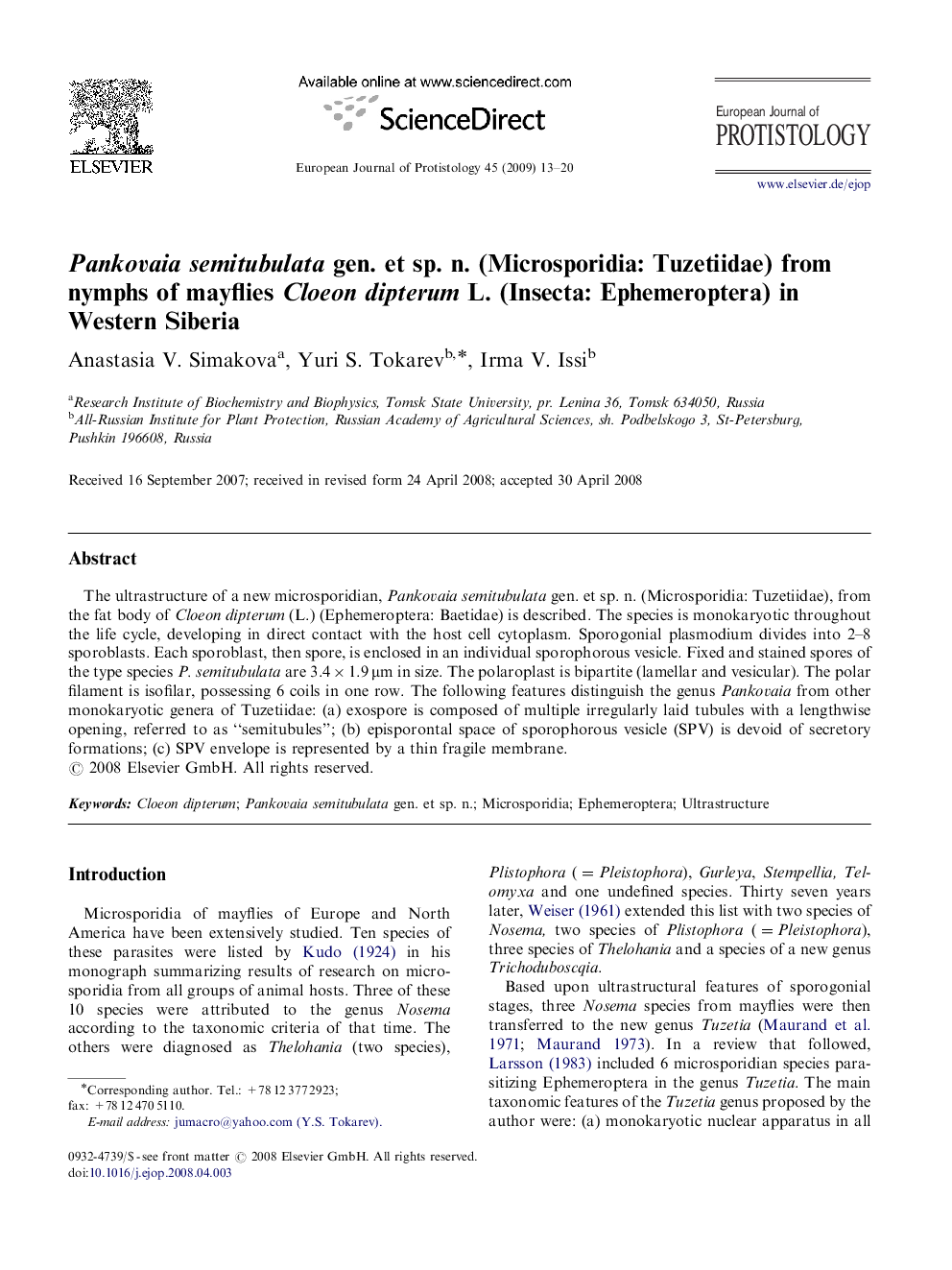| Article ID | Journal | Published Year | Pages | File Type |
|---|---|---|---|---|
| 2047175 | European Journal of Protistology | 2009 | 8 Pages |
The ultrastructure of a new microsporidian, Pankovaia semitubulata gen. et sp. n. (Microsporidia: Tuzetiidae), from the fat body of Cloeon dipterum (L.) (Ephemeroptera: Baetidae) is described. The species is monokaryotic throughout the life cycle, developing in direct contact with the host cell cytoplasm. Sporogonial plasmodium divides into 2–8 sporoblasts. Each sporoblast, then spore, is enclosed in an individual sporophorous vesicle. Fixed and stained spores of the type species P. semitubulata are 3.4×1.9 μm in size. The polaroplast is bipartite (lamellar and vesicular). The polar filament is isofilar, possessing 6 coils in one row. The following features distinguish the genus Pankovaia from other monokaryotic genera of Tuzetiidae: (a) exospore is composed of multiple irregularly laid tubules with a lengthwise opening, referred to as “semitubules”; (b) episporontal space of sporophorous vesicle (SPV) is devoid of secretory formations; (c) SPV envelope is represented by a thin fragile membrane.
